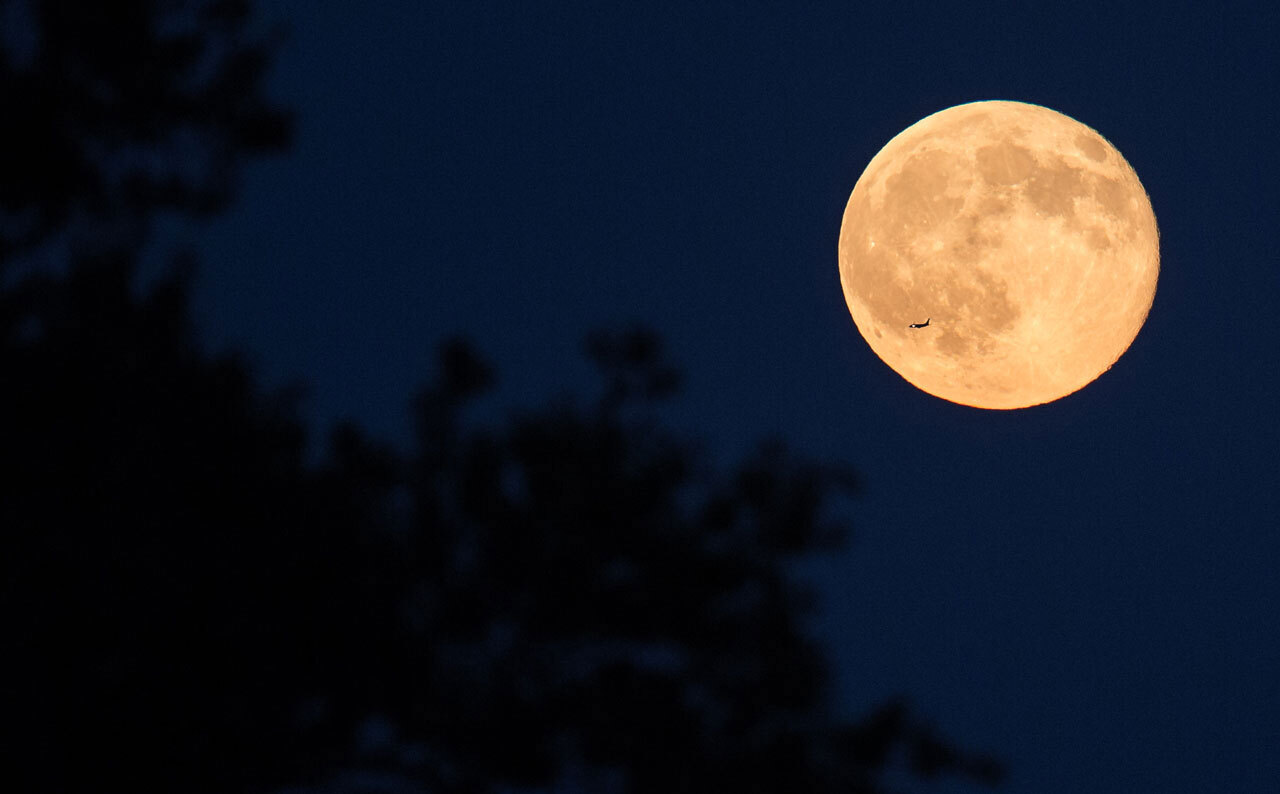When the full moon shines tonight (Oct. 1), it will mark the Harvest Moon of 2020.
If it seems a bit late to you, you're not alone. Each year, the full moon that occurs nearest to the autumnal equinox and is thus christened the Harvest Moon. Usually this title goes to the September full moon. There are other versions of this rule that classify the Harvest Moon as the full moon that comes either at or just after the equinox, which, more-often-than-not, would also put it in October. But in the years between 1970 and 2050, the Harvest Moon falls in October no less than 17 times, and 2020 just happens to be one of those years.
While the average occurrence of an October Harvest Moon is once every three years, sometimes as much as eight years can pass between such cases. In fact, the next time we will see a Harvest Moon in October will be in 2028.
Related: Harvest Moon 2020: When and how to see October's full moon

If you see the 2020 Harvest Moon, let us know! Send images and comments to spacephotos@space.com to share your views.
Some skywatchers may think that the Harvest Moon remains in the night sky longer than any of the other full moons we see during the year, but that's not the case. What sets tonight's full moon apart from the others throughout the year is that farmers at the peak of the current harvest season can work late into the night by the brilliant moonlight.
Related: Moon phases
Tonight, the moon rises at about the same time as the sun sets. More importantly, at this time of year, instead of rising its normal average 50 minutes later each day, the moon appears to rise at nearly the same time each night. In actuality, over the next few nights, the rising of the moon as seen from mid-northern latitudes will come, on average, roughly 24 minutes later each night. The reason for this seasonal circumstance is that the moon appears to move along the ecliptic and at this time of year when rising, the ecliptic makes its smallest angle with respect to the horizon.
Get the Space.com Newsletter
Breaking space news, the latest updates on rocket launches, skywatching events and more!
Related: The moon: 10 wild lunar facts to wow your friends
According to Guy Ottewell, the long-time editor of the Astronomical Calendar (now no longer published annually), this moon was the Dying Grass Moon to the Sioux. It is also said to be the "most romantic day in China," the Mid-Autumn Festival, when the man in the moon ties couples with invisible thread; people eat mooncakes (pastry filled with candied melon, egg-yolks, coconut and cashews), and at a festival in 1353 Zhang Shicheng gave the signal for uprising against the Yuan (Mongol) dynasty by sending messages in mooncakes, according to Ottewell.
And pay special attention to the day-after-Harvest moon on Friday (Oct. 2).
On that night it will be "escorted across the sky" by Mars, now shining with unaccustomed brilliance due to its unusual closeness to the Earth. Orange-yellow Mars will glow just above the almost full moon.
Occurring on the first October, also means that the Harvest moon will be the first of two full moons this month. The second full moon comes on Halloween (Oct. 31) and will be christened the "Blue Moon."
Editor's Note: If you snap a photo of night sky picture and would like to share it with Space.com's readers, send your photos, comments, and your name and location to spacephotos@space.com.
Joe Rao serves as an instructor and guest lecturer at New York's Hayden Planetarium. He writes about astronomy for Natural History magazine, the Farmers' Almanac and other publications. Follow us on Twitter @Spacedotcom and on Facebook.
Join our Space Forums to keep talking space on the latest missions, night sky and more! And if you have a news tip, correction or comment, let us know at: community@space.com.

Joe Rao is Space.com's skywatching columnist, as well as a veteran meteorologist and eclipse chaser who also serves as an instructor and guest lecturer at New York's Hayden Planetarium. He writes about astronomy for Natural History magazine, Sky & Telescope and other publications. Joe is an 8-time Emmy-nominated meteorologist who served the Putnam Valley region of New York for over 21 years. You can find him on Twitter and YouTube tracking lunar and solar eclipses, meteor showers and more. To find out Joe's latest project, visit him on Twitter.









